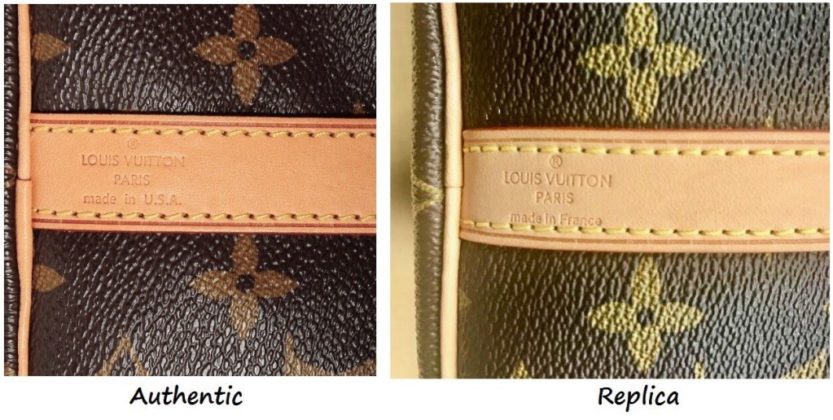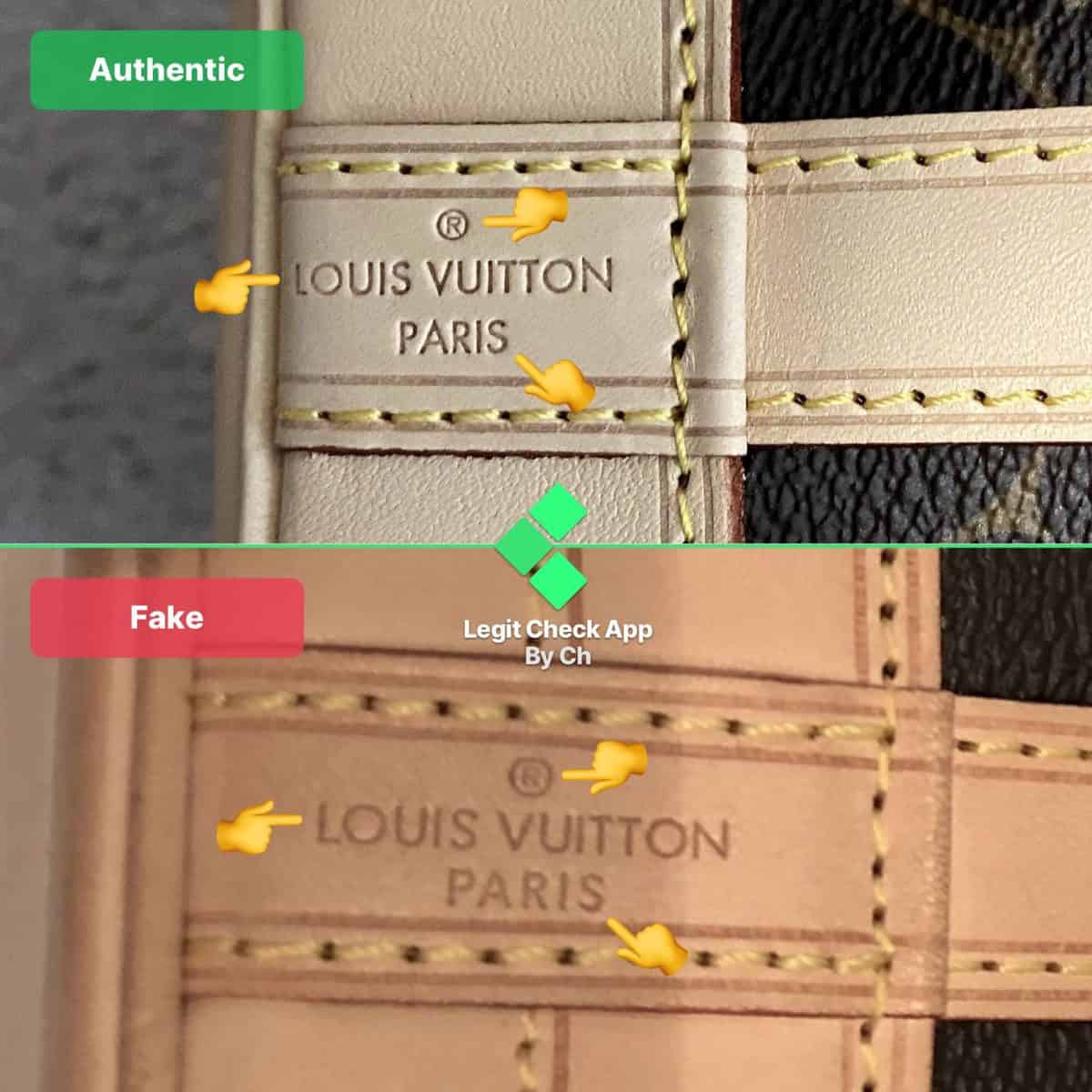How To Spot An Authentic Louis Vuitton Bag

The allure of a Louis Vuitton bag is undeniable. Its iconic monogram and reputation for luxury make it a coveted accessory. However, the high demand also fuels a thriving counterfeit market, leaving many buyers vulnerable to scams.
Distinguishing an authentic Louis Vuitton from a fake can be challenging, but not impossible. By paying close attention to detail, understanding the brand's hallmarks, and scrutinizing the seller, consumers can significantly reduce their risk of purchasing a counterfeit item.
The Monogram: More Than Just a Pattern
The Louis Vuitton monogram is arguably the brand's most recognizable feature. Authentic monograms are carefully aligned and symmetrical.
Key points to observe: The LV logo should never be cut off or crooked. On most models, the pattern is symmetrical, meaning it mirrors itself on either side of the bag's central seam.
However, keep in mind that on certain vintage styles and smaller bags, the pattern may not be perfectly aligned due to design constraints. Always verify this claim by cross checking the bag's style and design.
Hardware: Quality Speaks Volumes
Louis Vuitton uses high-quality metal hardware on its bags. This hardware should feel substantial and be consistently colored.
Look for smooth zippers that glide effortlessly. The hardware is generally brass or gold-toned, but avoid anything that looks too shiny or feels lightweight. Examine the stampings; they should be clean, crisp, and evenly spaced.
Many counterfeiters overlook the importance of high quality hardware, resulting in easily detectable flaws. Scratches and poor finishing of the hardware can also be a tell-tale sign.
Stitching: A Sign of Craftsmanship
Louis Vuitton bags are known for their meticulous stitching. Examine the stitching closely; it should be even, consistent, and durable.
The thread color should complement the bag's overall design. The number of stitches per inch is also important. Authentic bags typically have a specific number of stitches per inch, which varies depending on the model.
Uneven stitching, loose threads, or sloppy work are red flags. Check for consistency in stitch length and alignment throughout the bag.
Leather and Materials: Feel the Difference
Louis Vuitton uses high-quality leather and other materials. The feel and texture of these materials are important indicators of authenticity.
For example, the Vachetta leather used on many Louis Vuitton bags is untreated cowhide leather. It naturally darkens and develops a patina over time with exposure to sunlight and oils.
Fake bags often use inferior materials that feel stiff, plastic-like, or have an unnatural sheen. Familiarize yourself with the feel of authentic materials by visiting a Louis Vuitton store, if possible.
Date Codes and Serial Numbers: Decoding the Past
Most Louis Vuitton bags manufactured after the early 1980s have date codes. These codes are not serial numbers but rather indicate the week/month and year of manufacture, as well as the location of the factory.
Date codes are usually stamped on a leather tab inside the bag or hidden in a seam. Learning to decipher these codes can provide valuable information about the bag's origin and age.
A date code alone doesn't guarantee authenticity, as counterfeiters often replicate them. Always cross-reference the date code with the bag's style and the location codes with Louis Vuitton's factory locations. Bags made before the 1980s usually do not have a date code.
The Seller: Know Your Source
The reputation and legitimacy of the seller are crucial factors. Purchasing from authorized Louis Vuitton boutiques or reputable luxury consignment stores significantly reduces the risk of buying a fake.
Be wary of deals that seem too good to be true, as counterfeiters often lure buyers with deeply discounted prices. Request detailed photos and ask questions about the bag's origin and condition.
Read reviews and check the seller's feedback on online platforms. When purchasing online, use secure payment methods and avoid sending money through untraceable channels.
Price Point: Authenticity Comes at a Cost
Louis Vuitton is a luxury brand, and its products command a premium price. While pre-owned bags may be available at a slightly lower cost, prices that are drastically below retail value are a red flag.
Research the retail price of the bag you are interested in and compare it to the seller's asking price. Significant discrepancies should raise suspicions.
Consider the bag's condition when assessing its value. Even a well-maintained pre-owned bag will still reflect the inherent value of the Louis Vuitton brand.
In Conclusion
Spotting an authentic Louis Vuitton bag requires a keen eye for detail and a thorough understanding of the brand's hallmarks. By examining the monogram, hardware, stitching, materials, date codes, and the seller's reputation, consumers can protect themselves from counterfeiters.
Knowledge is the best defense against fake luxury goods. By being informed and vigilant, buyers can ensure they are investing in a genuine Louis Vuitton bag that will retain its value and bring joy for years to come.












![How To Spot An Authentic Louis Vuitton Bag How To Spot Real Vs Fake Louis Vuitton Bag [2025 Update] – LegitGrails](https://cdn.shopify.com/s/files/1/0094/6307/0798/files/The_Inner_Logo_Label_1_1024x1024_65031aa1-3f95-45d9-9b70-3b584501a8d5.webp?v=1717500404)

![How To Spot An Authentic Louis Vuitton Bag How To Spot Real Vs Fake Louis Vuitton Bag [2025 Update] – LegitGrails](https://cdn.shopify.com/s/files/1/0094/6307/0798/files/The_Damier_Pattern_1024x1024_34dadf50-3397-4cae-acd5-1cd7046ef94b.webp?v=1717500406)
![How To Spot An Authentic Louis Vuitton Bag How To Spot Real Vs Fake Louis Vuitton Bag [2025 Update] – LegitGrails](https://cdn.shopify.com/s/files/1/0094/6307/0798/files/The_Triangular_Logo_Tag_1024x1024_ab8a9eb4-4e31-4ce0-901a-639a74569c1e.webp?v=1717500405)


